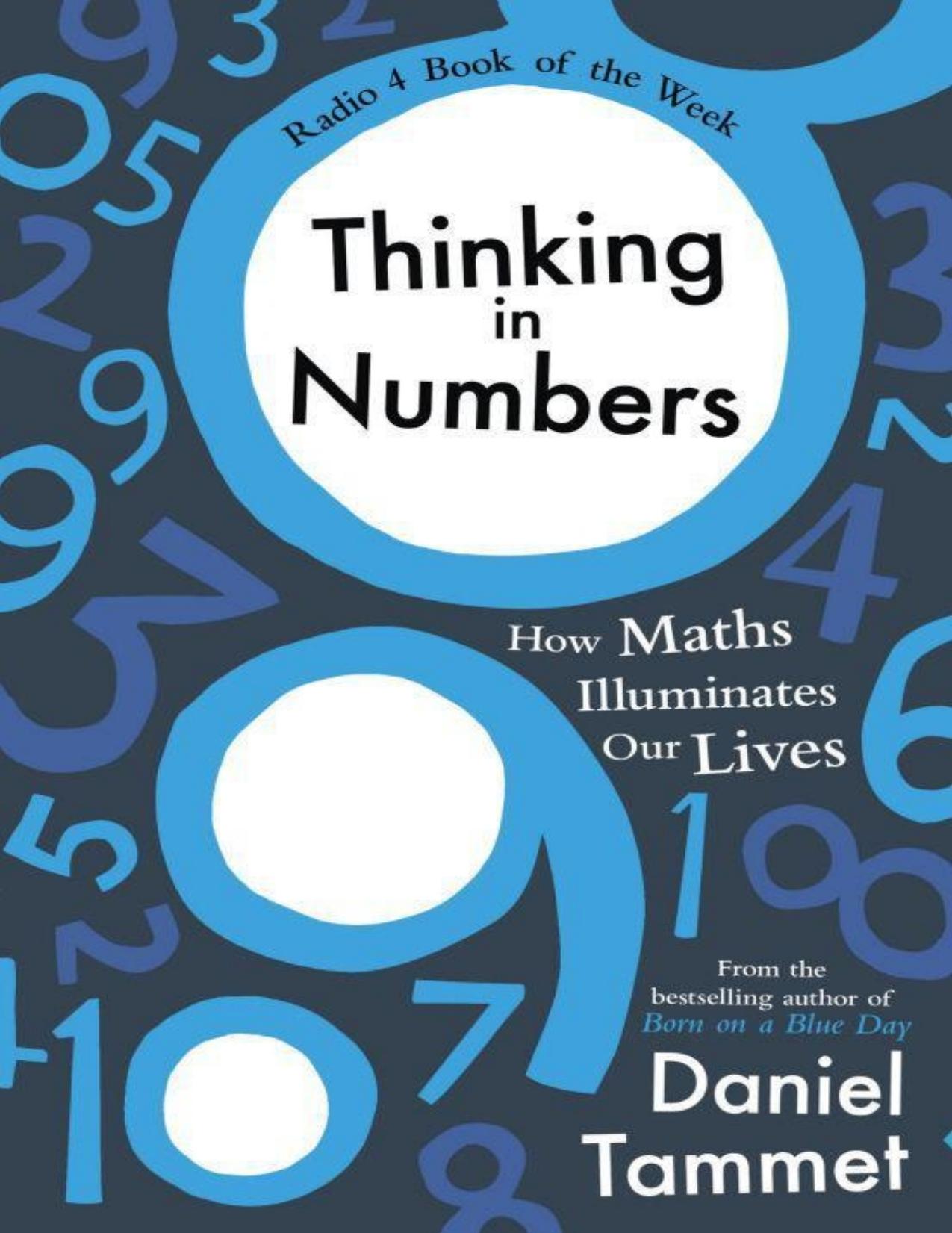Thinking in Numbers: How Maths Illuminates Our Lives by Daniel Tammet

Author:Daniel Tammet
Language: eng
Format: azw3, epub, mobi, pdf
ISBN: 1444737406
Publisher: Hodder
Published: 2012-08-16T07:00:00+00:00
Einstein’s Equations
Speaking about his father, Hans Albert Einstein once said, ‘He had a character more like that of an artist than of a scientist as we usually think of them. For instance, the highest praise for a good theory or a good piece of work was not that it was correct nor that it was exact but that it was beautiful.’ Numerous other acquaintances also remarked on Einstein’s belief in the primacy of the aesthetic, including the physicist Hermann Bondi, who once showed him some of his work in unified field theory. ‘Oh, how ugly,’ Einstein replied.
It is a mostly thankless task to try to assign to mathematicians some universal trait. Einstein’s famous predilection for beauty offers one rare exception. Mathematicians can be tall or short, worldly or remote, bookworms or book-burners, multilingual or monosyllabic, tone-deaf or musically gifted, devout or irreligious, hermit or activist, but virtually all would agree with the Hungarian mathematician Paul Erdos when he said, ‘I know numbers are beautiful. If they are not beautiful, nothing is.’
Einstein was a physicist, yet his equations inspired the interest and admiration of many mathematicians. His theory of relativity drew their praise for combining great elegance with economy. In a handful of succinct formulas, every symbol and every number obtaining its perfect weight, Newtonian time and space were recast.
Books on popular mathematics abound with discursive explanations of technical proofs to illustrate their beauty. I cannot help but wonder if this might not be a mistake. I suspect that, more usually, what we laymen really admire in the work of a Euclid or an Einstein is its ingenuity, rather than its beauty. We are impressed, and yet unmoved by them.
The barrier to an appreciation of mathematical beauty is not insurmountable, however. I would like to suggest a more indirect approach. At a remove from the technical acumen of a theorist, my suggestion is more intuitive. The beauty adored by mathematicians can be pursued through the everyday: through games, and music, and magic.
Take the game of cricket, which was the frequent inspiration for G.H. Hardy, a major number theorist and the author of A Mathematician’s Apology, who scoured the newspaper for cricket scores over breakfast every morning. In the afternoon, after some hours at his desk, he would furl his theorems and transport them in his pockets (in case of rain) to see a local match. Among his papers he sketched the following cricket ‘dream team’:
Download
Thinking in Numbers: How Maths Illuminates Our Lives by Daniel Tammet.epub
Thinking in Numbers: How Maths Illuminates Our Lives by Daniel Tammet.mobi
Thinking in Numbers: How Maths Illuminates Our Lives by Daniel Tammet.pdf
This site does not store any files on its server. We only index and link to content provided by other sites. Please contact the content providers to delete copyright contents if any and email us, we'll remove relevant links or contents immediately.
The Infinite Retina by Robert Scoble Irena Cronin(6215)
Harry Potter and the Cursed Child: The Journey by Harry Potter Theatrical Productions(4465)
The Sports Rules Book by Human Kinetics(4338)
Molly's Game: From Hollywood's Elite to Wall Street's Billionaire Boys Club, My High-Stakes Adventure in the World of Underground Poker by Molly Bloom(3505)
A Knight of the Seven Kingdoms by George R R Martin(3220)
Quidditch Through the Ages by J.K. Rowling(3084)
How To by Randall Munroe(3074)
Flowers For Algernon by Daniel Keyes(3047)
Quidditch Through the Ages by J K Rowling & Kennilworthy Whisp(2948)
Stacked Decks by The Rotenberg Collection(2841)
Quidditch Through the Ages by Kennilworthy Whisp by J.K. Rowling(2831)
Quidditch through the Ages by J. K. Rowling(2781)
Quidditch Through The Ages by J. K. Rowling(2745)
776 Stupidest Things Ever Said by Ross Petras(2739)
Ready Player One: A Novel by Ernest Cline(2672)
What If?: Serious Scientific Answers to Absurd Hypothetical Questions by Randall Munroe(2667)
Beautiful Oblivion by Jamie McGuire(2584)
The Book of Questions: Revised and Updated by Gregory Stock Ph.d(2538)
Champions of Illusion by Susana Martinez-Conde & Stephen Macknik(2436)
